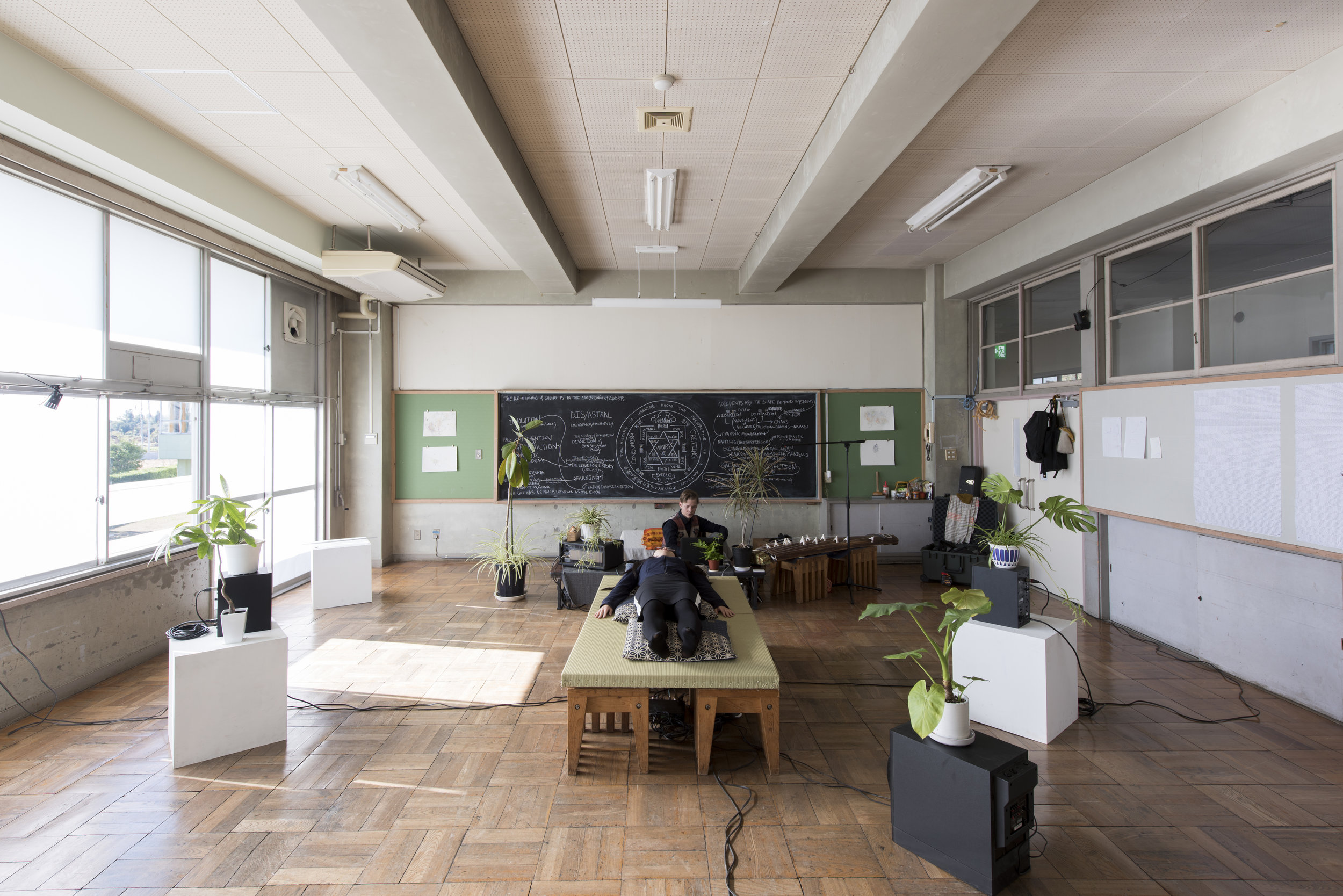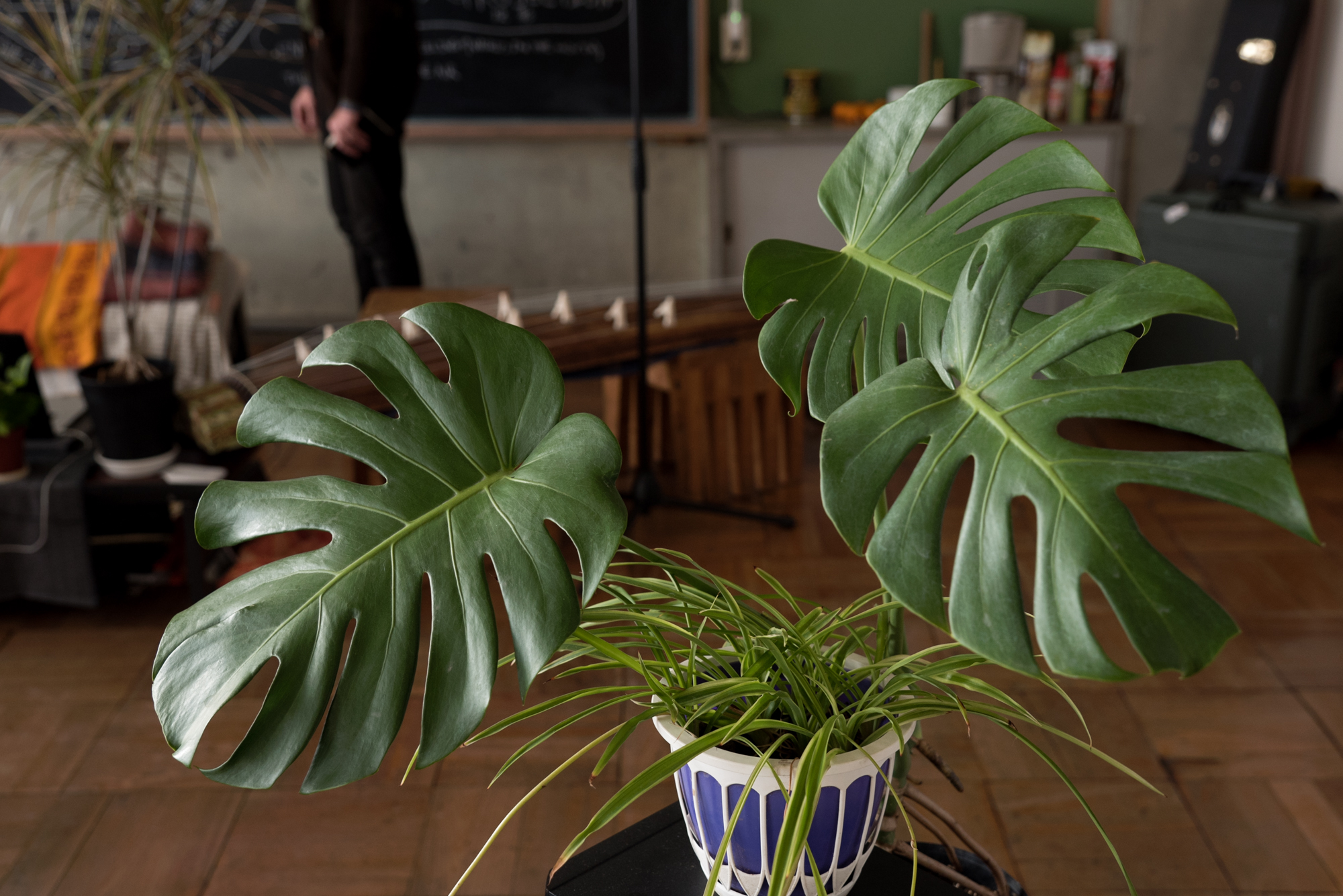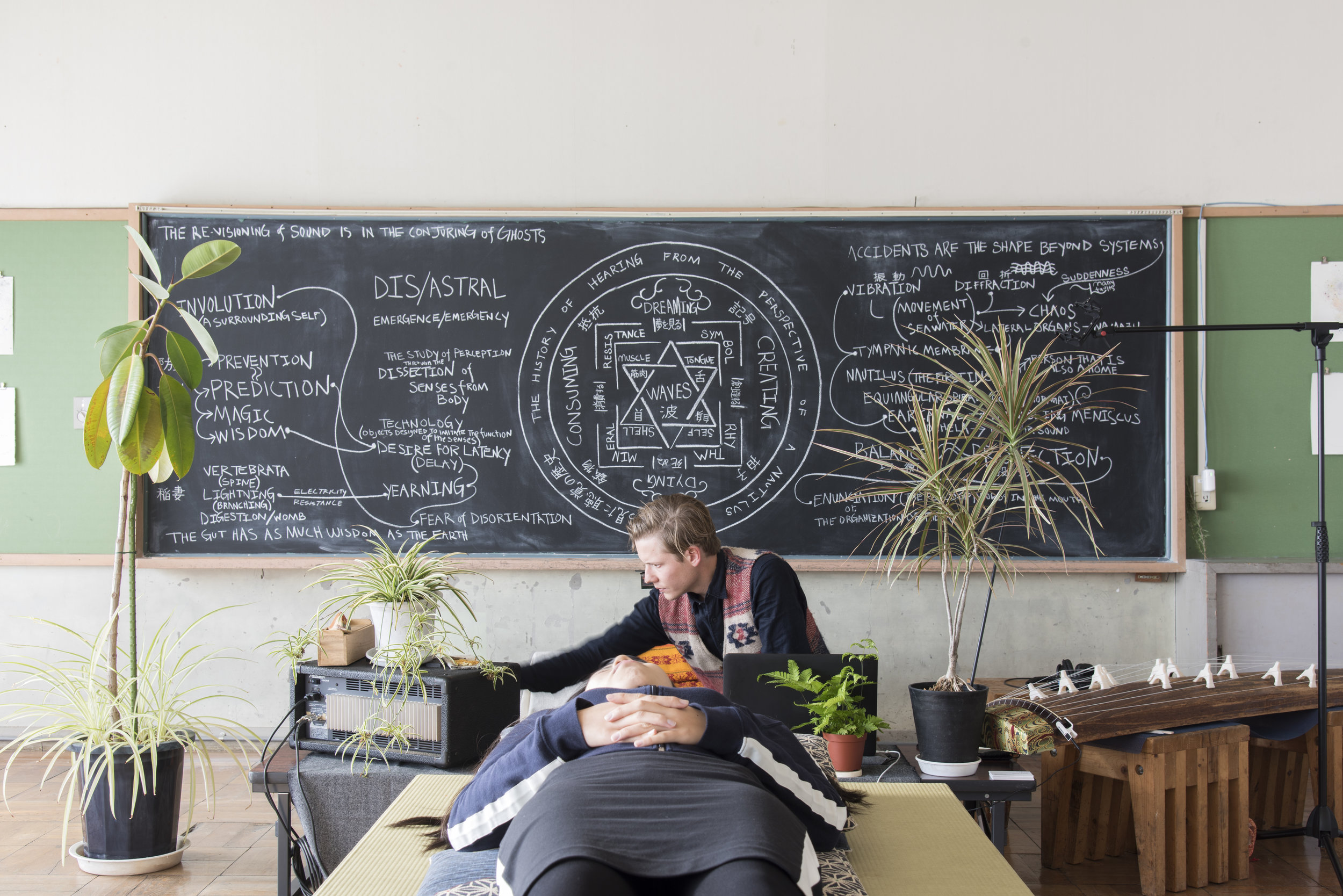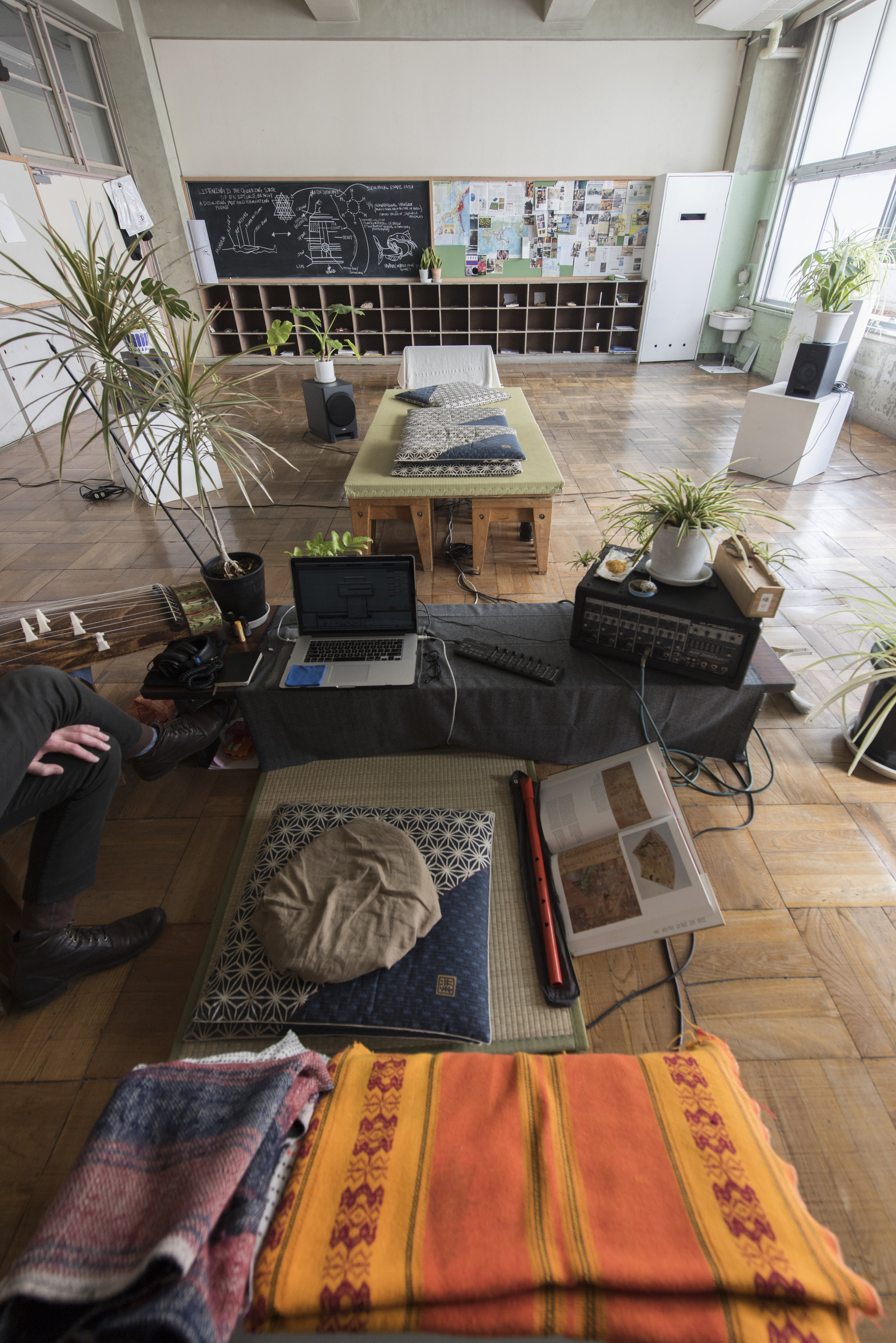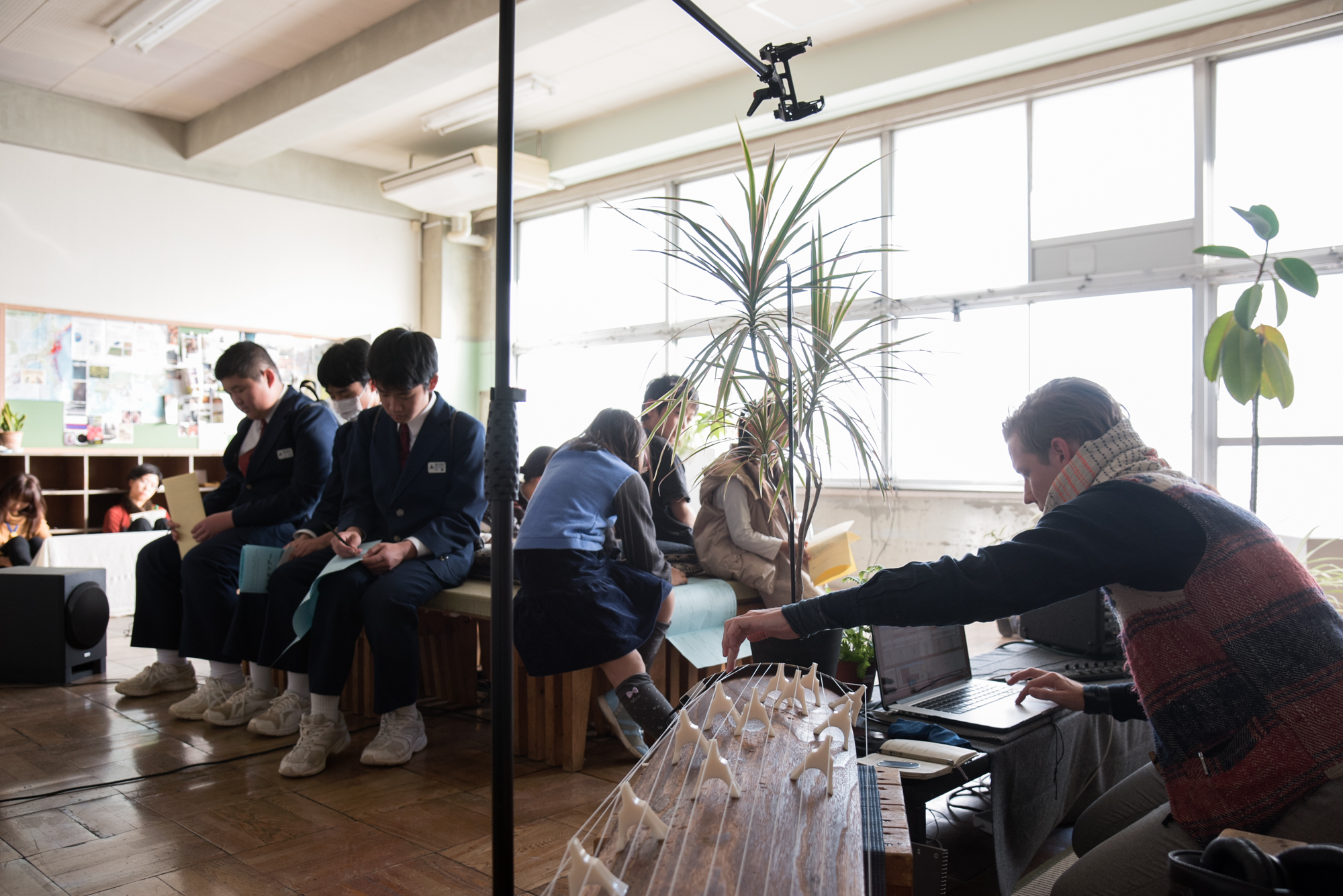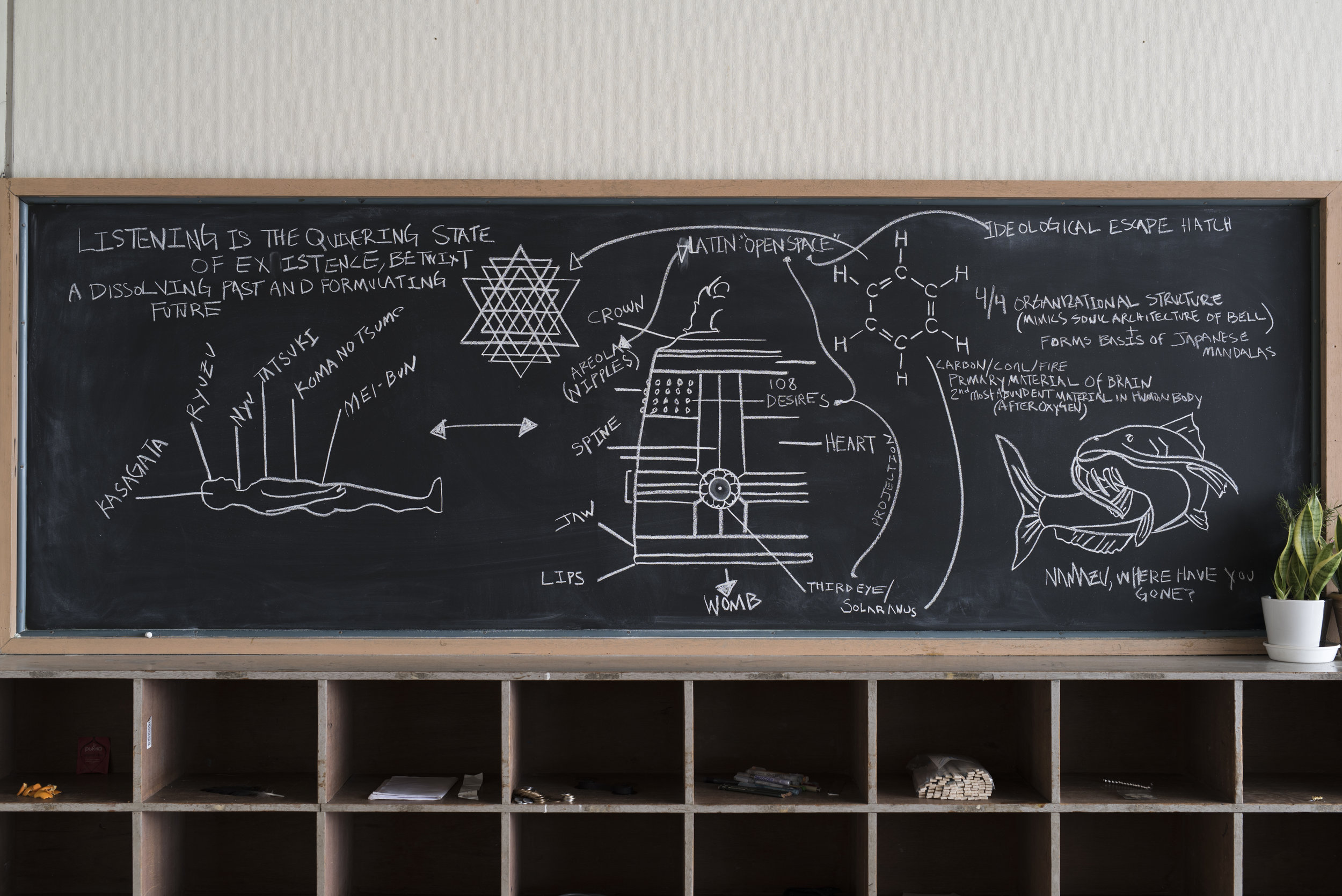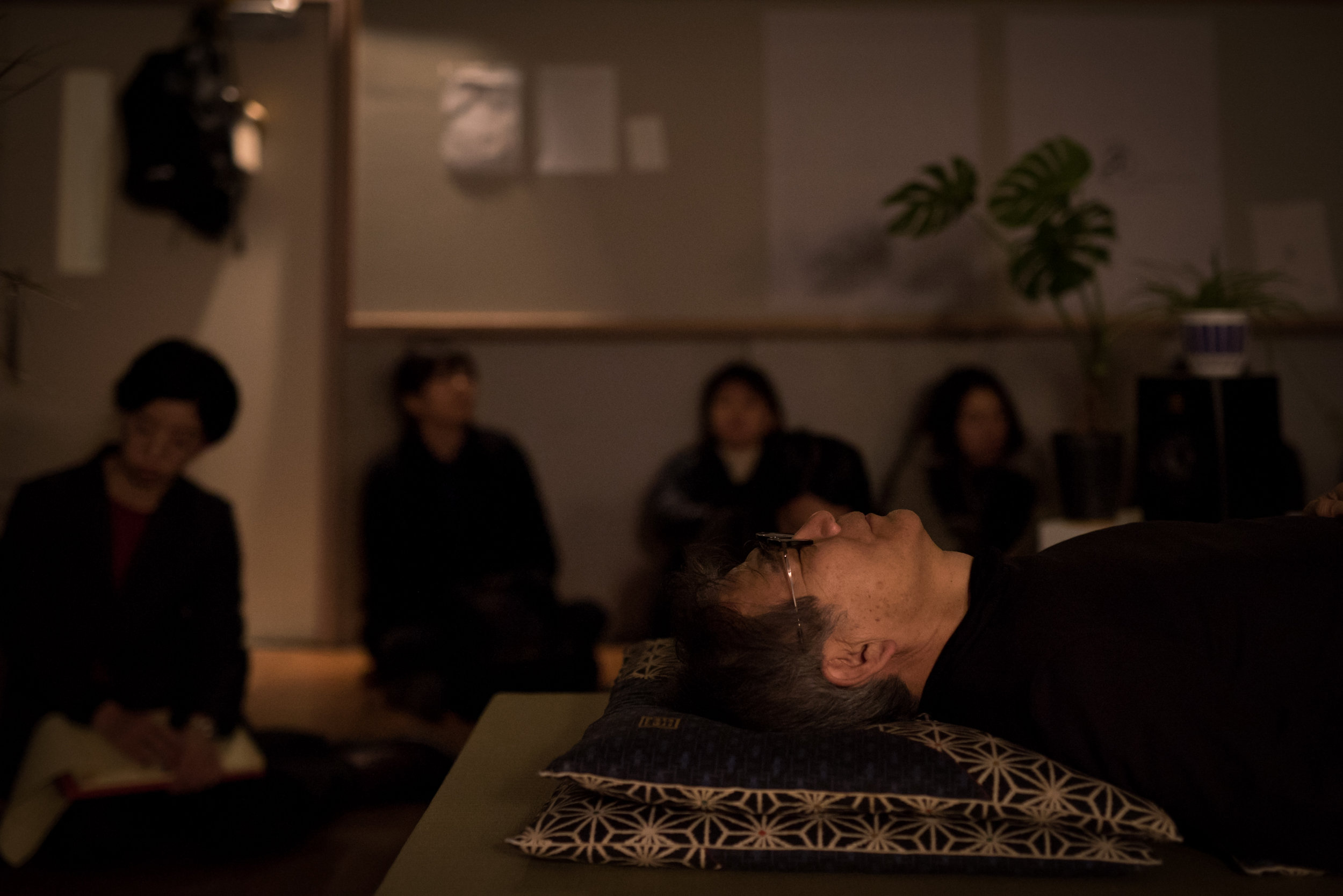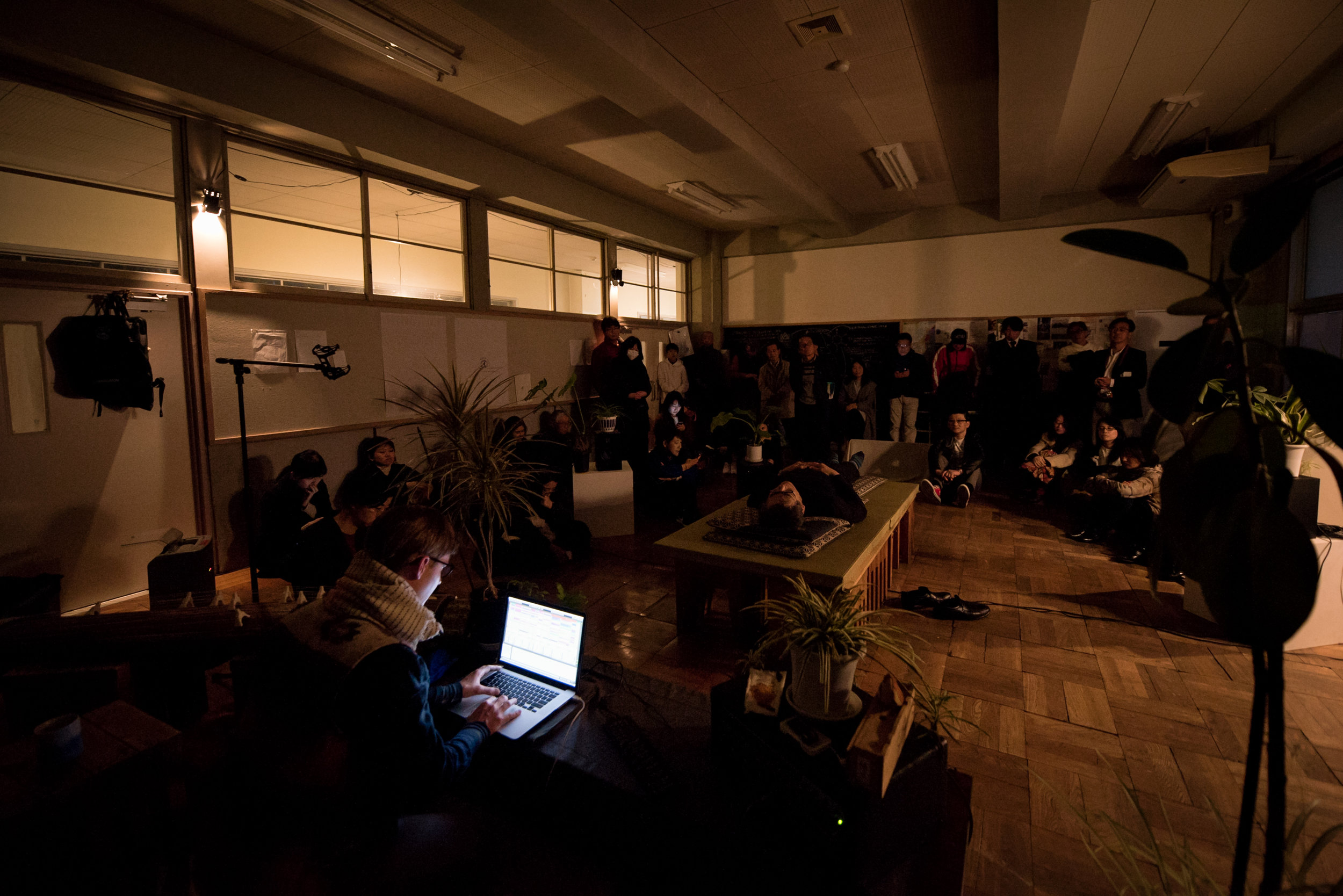2017
CENTER FOR CELLULAR ALIGNMENT
Speculative community center
Arcus Project; Moriya City, Japan.
In his unique cross-disciplinary, research-based practice, Curtis Tamm engages with natural phenomena, geophysics, geology and animals, creating visual and sound works.
Tamm conducted the research project Tympanic Tether on the Greek island of Santorini, exploring his interest in volcanic activities, human or animal precognition of natural disasters, and the use of sirens as warnings. Working with firefighters, police officers, bird breeders, ambulance drivers, and others, Tamm built up a collection of various field recordings into a sound library. He then made an improvised performance where he played these sounds as a new kind of siren idiosyncratic to the island.
For Tamm, sounds, a tsunami, and an earthquake are all things that result from waves and, as such, inherently possess correlation. During his residency, he visited the Earthquake Research Institute at the University of Tokyo and the National Research Institute for Earth Science and Disaster Resilience, and conducted research on the relationship between sound and Buddhism, Shinto, and folk beliefs. He also came into contact with traditional Japanese instruments such as the koto and continued to increase his collection of sounds in his audio library, recording the sounds of bells at temples in Kyoto and Ibaraki Prefecture as well as the sounds made during the casting of a temple bell at a foundry in the town of Makabe in Ibaraki. He also conducted a workshop involving an amateur chorus group in Moriya.
At Open Studios, visitors are invited to lie down and listen to the sounds. This “listening session” is an attempt to use sounds in order to evoke some hereditary ability within our bodies, similarly to how catfish can supposedly sense tremors before earthquakes happen, and that has perhaps lain dormant since ancient times. In Tamm’s way of thinking, we can find the connectivist idea of trying to locate links between things that initially seem unrelated.
Kenichi Kondo (2017 guest curator, Arcus Project)

